The best PC cases in 2024: These are the chassis I'd use for my next gaming builds
You'll want the best PC case if you're building your perfect gaming PC.
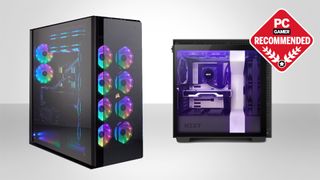
The best PC case is the place your hardware calls home. It's the platform for your ultimate gaming rig and a showpiece simultaneously. Besides looks, a PC case needs to have room for modern components, making upgrading or maintenance easy. There are many options at different prices; some keep the look modest, and others make it scream with loads of RGB lights.
Your choice of PC case will also dictate what can go inside. If you want multi-loop liquid cooling and the biggest GPUs on the planet, then your best bet is a full-tower chassis. The best full-tower chassis right now is the Corsair Obsidian 1000D, as it offers a ridiculous amount of room and is super versatile.
However, if you're looking for a small-scale build, then a Mini-ITX case will be what you're after. The best Mini-ITX case is the NZXT H1 V2, which has been my own chassis of choice for quite a while now thanks to its simplicity. It's incredibly easy to build in.

Dave's been tinkering with PCs for decades, and naturally that means he's come close to losing a few fingers on poorly crafted cases. The best cases don't leave you covered in blood, and Dave is keen to find the best looking cases with the most airflow and compatibility.
The Quick List
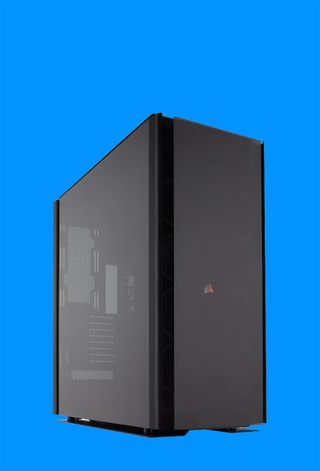
The best full-tower
Flashy, large, and stuffed with fans—the Obsidian 1000D is a behemoth for the biggest and boldest PC builds today.
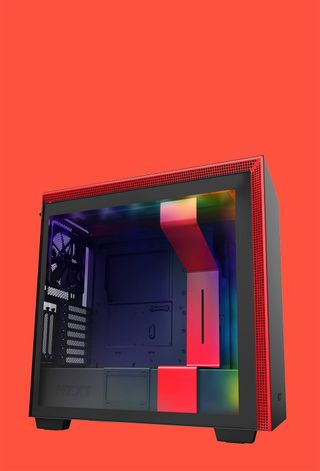
The best mid-tower
NZXT put together some incredibly smart cases, and this one is smarter than most. It includes a smart hub to control your machine and includes some superb cable management tricks.
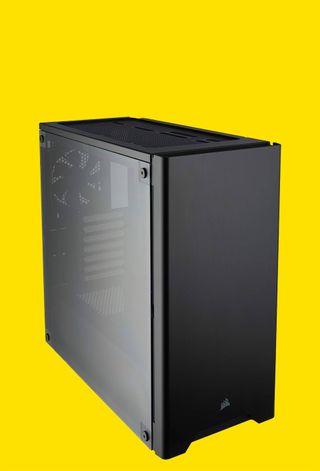
The best budget
This Corsair case has been around a while, but it's just as solid a budget PC case as ever. You don't have to spend a lot for plenty of compatibility and a decent looking case.
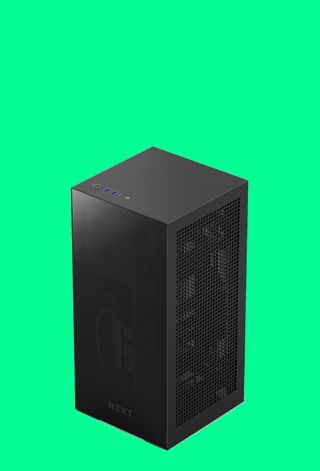
The best Mini-ITX
The updated version of this case still sits on my desk in the office. Simple, compact, and yet easy to build into. For mini PCs, it's mega good.
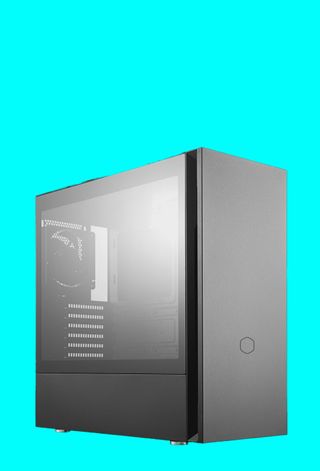
The best silent
Gaming chassis frequently sacrifice acoustic comfort for big windows and tons of fans. Not this Cooler Master. If you're after hushed tones while you game, look no further.
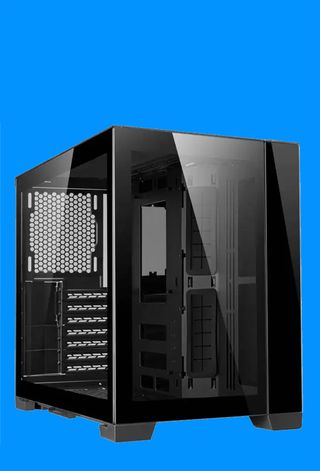
The best show build
Lian Li has put together a gorgeous case in the PC-O11. Though more than that, it's also highly customisable. It's superb for custom liquid loops, fits all manner of bracket and distro plate, and it's able to fit all kinds of radiators inside.
Recent updates
This guide was updated to a new, easier-to-read format on January 19, 2024.
Best full-tower PC case




1. Corsair Obsidian 1000D
Our expert review:
Specifications
Reasons to buy
Reasons to avoid
The Corsair Obsidian Series 1000D is a behemoth of a PC case ready to house the biggest and baddest systems. In fact, it's ready to house two systems if you wanted to go down that route. We've seen them running with full E-ATX motherboards and little mini-ITX motherboards tucked inside there, too.
Standing tall at a staggering 27.3-inches, this "super-tower" features enough space to house 18 fans and up to four massive radiators installed simultaneously. That's enough cooling for any setup.
The 1000D features a unique triple-chamber design with convenient french-door-styled storage compartments and telescoping radiator trays for easy installation in addition to the stellar cooling support.
Because it's 2024, of course, there is also an RGB-lit front panel I/O with built-in smart lighting and fan control courtesy of Corsair's integrated Commander Pro controller. The Obsidian 900D has long been a top choice for massive, over-the-top builds, and it only fits that the 1000D was designed to knock it off its throne.
The obvious caveat with anything that claims to be a "super" version of its category, is that this thing will really cost you a large chunk of your PC build budget. So long as you're conscious of that, and have the ready money to stretch to that sort of cost—we're talking $500+ here—then the Obsidian 1000D will house the monster gaming PC of your dreams.
Best mid-tower PC case




2. NZXT H710i
Our expert review:
Specifications
Reasons to buy
Reasons to avoid
This most recent iteration of NZXT's "smart" chassis brings a couple of new features to help modernize your build. This ultra-clean and uncomplicated mid-tower case emphasizes convenience above all. It includes many of the same trappings as its predecessor, but costs a little bit more and has just a couple of neat changes. The NZXT H710i features a front panel USB 3.1 Type-C port and the ability to vertical mount your GPU with a separate PCIe riser.
The H710i features integrated RGB lighting around the tempered glass side panel, controlled by the NZXT CAM software and a built-in LED lighting hub that allows for easy control of RGB lighting and fan speeds as well. To keep things cool, the H710i features ventilation gutters that run the perimeter of each side of the case, aided by the four 120mm fans included with the case.
Cable routing is where the H710i shines—achieved primarily through a large aluminum slat that allows you to route your cables into the integrated cable channels on the back of the case.
In our testing, we found this case keeps everything clean and clutter-free, and the velcro straps built into the back help hold everything down. An excellent, and easy alternative to the rubber gasket solution found on some of the other top mid-towers.
Best budget PC case




3. Corsair Carbide 275R
Our expert review:
Specifications
Reasons to buy
Reasons to avoid
Corsair's commitment to PC cases means that it's able to offer great options both at the very high end, such as the enormous 1000D, but also in the more modest, budget section of the market. Here, that's ably represented by the Corsair Carbide 275R, an affordable mid-tower chassis that looks anything but.
The clean, unfussy design of the Carbide 275R means that it's not going to divide opinion because of some edgy aesthetic, nor distract from the hardware inside it. And only spending some $70 on the clothing of your PC means that you'll be able to prioritise your cash for the best parts.
Which you'll still be able to show off because you get a full-height acrylic side panel—though you can buy a more expensive tempered glass version—that gives you a great view of your gaming rig's innards.
And it's super easy to build those innards into the Carbide 275R. The large cutout on the motherboard tray meant that even when I was figuring out which cooler to mount on the system I was building I could leave the motherboard in place and switch brackets at will.
There's also some decent cable routing and plenty of space and options for placement of different all-in-one liquid cooling radiators, too. In terms of keeping the build clean, I also really appreciate the PSU shroud at the bottom of the case which covers the power supply and all that ugly cabling with a metal casing in the same colour as the chassis itself. Which can be either black or white, incidentally.
You do only get a couple of simple 120mm fans included in the package, so if you're not building an AIO radiator into the machine you'll probably want to pick up some extra PC fans to help the cooling. My only other niggle is the fact the top I/O connections don't include a USB Type-C option—that's something I've come to expect, even from budget cases.
Still, for the money, you'll be able to build a really good-looking gaming PC without breaking the bank, which will let you focus on what's going inside.
Best Mini-ITX PC case






Specifications
Reasons to buy
Reasons to avoid
The NZXT H1 V2 is the best Mini-ITX PC case because it nails the build experience, which is one of the biggest pain points for small form-factor (SFF) builds in general. I loved building in the original H1 for this reason, and the V2's even better. So much better, in fact, that I've been using it to house my components ever since I got my hands on it.
Putting aside the fixed PCIe risers which were an issue with the V1, the other changes with the V2 make for a solid jumping-off point for Mini-ITX builds. The main benefit to the H1 is its pre-installed AIO cooler and PSU, with all the important cables being nicely pre-routed for you—no fiddling for hours on end just to get everything connected.
The V2 improves things in this regard compared to the V1, too, because it's a little bigger and has more space to work with behind the motherboard. This makes it one of the easiest Mini-ITX builds you can go for, despite the new rear-case fan and 750 W PSU.
Which isn't to say that it'll be as easy to build in as a full-sized chassis would be, of course, but it's about as simple as you can get with a SFF design. NZXT's even stuck a plethora of labels and tags around the case to let you know what goes where and how to build things, which is useful for a tool-less build like this.
Unfortunately, but perhaps expectedly, there's poor memory clearance because of the fan on top of the water-cooler's radiator, meaning you'll only be able to fit 46 mm DIMMs in there at maximum. This rules out some memory kits, which is something to keep in mind if you were planning on migrating your current sticks to the new case.
But that's just the kind sacrifice you make for a SFF Mini-ITX build, and it's well worth it for this one. If you're looking for something small, sleek, and simple to build in, the H1 V2's where it's at.
Read our full NZXT H1 V2 review.
Best silent PC case




5. Cooler Master Silencio S600
Our expert review:
Specifications
Reasons to buy
Reasons to avoid

Best CPU for gaming: the top chips from Intel and AMD
Best graphics card: your perfect pixel-pusher awaits
Best SSD for gaming: get into the game ahead of the rest
If you’re the type of gamer that requires total concentration, a quiet PC case can be critical. Once your PC starts heating up and fans begin blowing at full force, your once-silent PC can quickly turn into something that resembles a roaring jet engine. It’s times like these when a silent PC case can come in handy, and nothing does the job quite like Cooler Master’s Silencio series.
The Silencio S600 mid tower looks simple on the outside, but the interior is filled with intelligent engineering and high-quality sound dampening materials to help drown any unnecessary noise. Usually, this comes with a severe compromise for airflow, but the S600 does a pretty decent job of moving air and keeping things cool despite its silent properties.
But that's the thing that will require the most thought when it comes to building a full machine into this setup. You need to ensure there's optimal airflow across the key components to keep the temperatures down, and therefore ensure the volume stays low, too.
You'll also have to decide whether you want to go for maximum silence and keep the PC completely under wraps, or whether you still want a side panel to be able to show off the insides and your shiny, expensive gaming parts.
Best show build PC case




6. Lian-Li PC-O11 Dynamic
Our expert review:
Specifications
Reasons to buy
Reasons to avoid
If you're strapped for vertical space, the Lian-Li PC-O11 Dynamic is a short and stubby alternative to some of the more long-necked PC cases we've seen. It's a case I'm pretty familiar with, as it's the model that I built a custom liquid-cooled GPU and CPU loop into.
I found that the 011 Dynamic is great for a custom loop, as there are many excellent distro plates that can fit into the front of the PC-O11, but it's just as well suited to your usual AIO or air-cooled setups. You can install AIO and radiators up to 360mm pretty much anywhere you are on the top, bottom, and side of the case.
Featuring a tempered glass design, we found installing components in the PC-011 a painless experience during testing. Well, apart from some of the super-sharp angles that might spike the odd finger. You can remove the top and both sides of the chassis for easy access to its internals. Parts of the process that used to be stressful, such as liquid cooler installations, are now stumbling blocks of a bygone era.
The chassis has a bunch of expansion slots (eight) and can fit multiple GPUs if you decide to go that route. I'm not quite sure why you'd that, but who am I to tell you what to do with your PC build. Live your life.
Plus, if you're willing to shell out a bit more cash over the vanilla model, the PC-011 comes in a Razer Edition as well. Fully integrated with the Synapse 3 lighting software, you can even coordinate it with your other Razer-made peripherals.
The beauty is that this could be a case for a simple budget build or something a bit more extravagant. It really comes down to your skill level and creativity as a PC builder.
Best PC case FAQ
Will a micro-ATX motherboard fit inside a mid tower case?
It certainly will. The spacing of the mounting holes on an micro-ATX board match those found on an ATX board, there are just fewer of them. Mounting a micro-ATX into a mid tower case in place of an ATX is totally doable.
How do I know what size computer case I need?
The key question here is, how big is your motherboard? A full-size PC case supports the giant E-ATX boards but will take up a ton of space under or on your desk. Small form factor cases like the NZXT H200i can only accommodate Mini-ITX boards and are restrictive for other big GPUs components. Mid-tower PC cases are a more common choice that supports all ATX and a handful of E-ATX boards. Size does indeed matter, after all.
Once you've decided on the case size, the fun part happens next. You can consider dozens of features and options like I/O ports, cooling configurations, windows, airflow, and lighting, and that's to get started.
The biggest gaming news, reviews and hardware deals
Keep up to date with the most important stories and the best deals, as picked by the PC Gamer team.

Dave has been gaming since the days of Zaxxon and Lady Bug on the Colecovision, and code books for the Commodore Vic 20 (Death Race 2000!). He built his first gaming PC at the tender age of 16, and finally finished bug-fixing the Cyrix-based system around a year later. When he dropped it out of the window. He first started writing for Official PlayStation Magazine and Xbox World many decades ago, then moved onto PC Format full-time, then PC Gamer, TechRadar, and T3 among others. Now he's back, writing about the nightmarish graphics card market, CPUs with more cores than sense, gaming laptops hotter than the sun, and SSDs more capacious than a Cybertruck.
- Terrence Mai
- Jacob RidleyManaging Editor, Hardware
Most Popular


